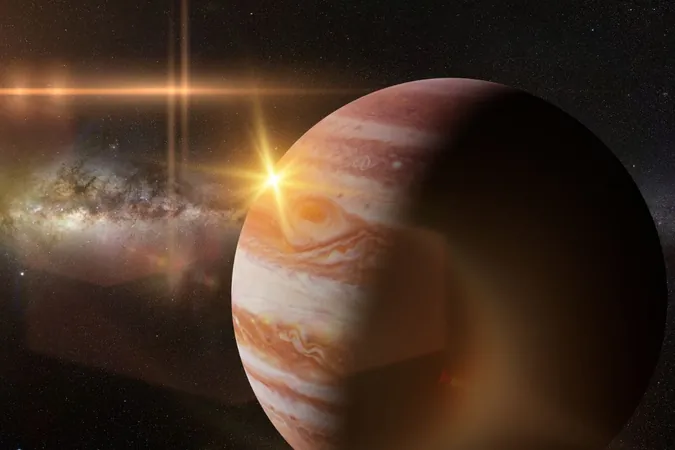
Unveiling Jupiter’s Colossal Past: A Gas Giant 2.5 Times Its Size!
2025-06-16
Author: Ken Lee
A Giant Transformation: Jupiter's Early Years
Prepare to have your mind blown! Recent research has revealed that over 4.5 billion years ago, Jupiter was a staggering 2.5 times its current size. This astonishing finding, published in May 2025, reshapes everything we thought we knew about planetary evolution and spotlights Jupiter's crucial role as the architect of our solar system.
Jupiter's Explosive Growth Spurt
In the chaotic early solar system, Jupiter emerged as the heavyweight champion. Astronomers Konstantin Batygin and Fred C. Adams indicate that during this cosmic race, the infant Jupiter ramped up its size at a jaw-dropping rate—nearly 2.4 times its mass per million years! This explosive growth kicked off about 3.8 million years after the first solid particles formed in the solar nebula.
And here’s the kicker: as it ballooned, Jupiter generated a magnetic field fifty times stronger than what we see today, which played a crucial role in attracting an immense cloud of gas and dust. Through a process known as core accretion, Jupiter’s gravitational might helped shape not just its own destiny, but the very structure of our solar system.
Uncovering Secrets from the Moon's Orbits
Hold on—our knowledge came from an unexpected source! The orbital patterns of Jupiter’s lesser-known moons, Amalthea and Thebe, hold ancient secrets of the planet's formative years. Their tilted orbits have turned out to be a gravitational fossil record, providing crucial info without relying on outdated theoretical models.
By focusing on these moons, Batygin and Adams could pin down Jupiter's size, accretion rate, and magnetic intensity at its birth. Fred Adams was astounded, stating, "It's incredible how, after all this time, we can still extract clues about Jupiter's early state!" Similar to ancient manuscripts hidden beneath lava, these moons serve as a thrilling window into our cosmic heritage.
The Blueprint of Our Solar System
Jupiter doesn’t just rule its own clouds; it’s responsible for the broader architecture of the solar system. Its immense gravitational field helped determine planetary orbits and redistributed materials, potentially setting the stage for Earth’s ability to harbor life.
Understanding Jupiter's timeline also sheds light on the formation of other planetary systems beyond our own, helping scientists to piece together the vast puzzle of the galaxy.
Jupiter’s Lasting Legacy: More Than Just A Big Ball of Gas
The implications of this ancient giant stretch far beyond mere scientific curiosity. Studying Jupiter gives us insights into gas giants around other stars, allowing for a better understanding of potentially habitable zones. This massive planet might even have acted as a shield, protecting Earth from relentless comet bombardments while life developed.
Moreover, Jupiter's formation offers valuable lessons on resource utilization in space, drawing parallels to innovative solutions we need here on Earth to tackle environmental challenges.
A Milestone in Cosmic Discovery!
The Caltech study marks a groundbreaking moment in planetary science, illustrating how modern observations can rewrite the past. With advancing telescope technology, Jupiter's history serves as a crucial reference for understanding gas giant formation across the universe.
This research showcases that planets are pulsating entities with dynamic stories that ripple throughout the ages—reminding us that the cosmos holds many more secrets waiting to be revealed!



 Brasil (PT)
Brasil (PT)
 Canada (EN)
Canada (EN)
 Chile (ES)
Chile (ES)
 Česko (CS)
Česko (CS)
 대한민국 (KO)
대한민국 (KO)
 España (ES)
España (ES)
 France (FR)
France (FR)
 Hong Kong (EN)
Hong Kong (EN)
 Italia (IT)
Italia (IT)
 日本 (JA)
日本 (JA)
 Magyarország (HU)
Magyarország (HU)
 Norge (NO)
Norge (NO)
 Polska (PL)
Polska (PL)
 Schweiz (DE)
Schweiz (DE)
 Singapore (EN)
Singapore (EN)
 Sverige (SV)
Sverige (SV)
 Suomi (FI)
Suomi (FI)
 Türkiye (TR)
Türkiye (TR)
 الإمارات العربية المتحدة (AR)
الإمارات العربية المتحدة (AR)